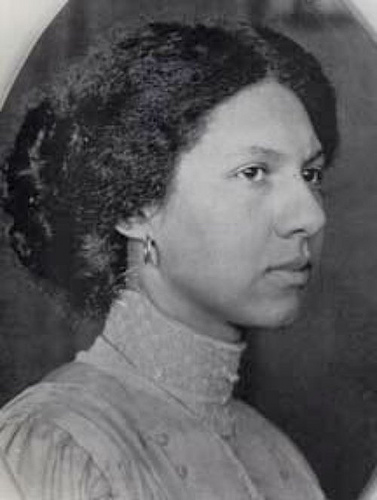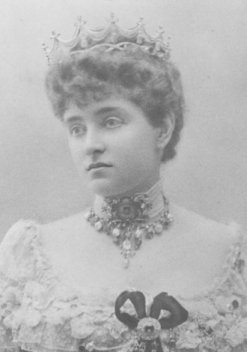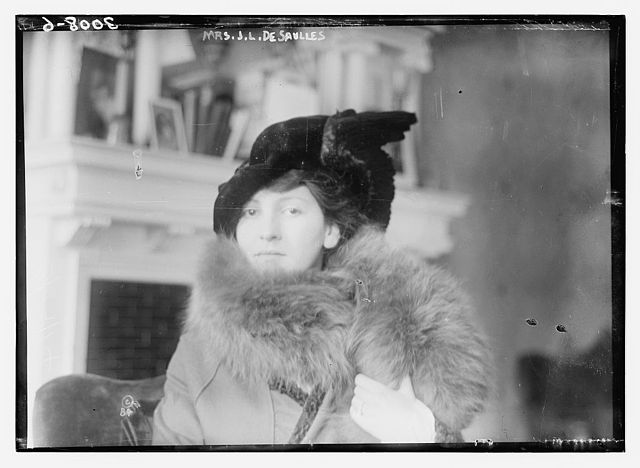
Meta (mee-tah) Vaux Warrick Fuller was not the first African-American sculptress–that would be Edmonia Lewis–but she became the most prominent. She was born in 1877 to a prominent Philadelphia family, her father a successful barber and her mother an equally successful beautician. Raised in relative financial comfort, and educated in the typical feminine graces of the time, Fuller’s career as an artist began in high school, when one of her projects was chosen for inclusion in the 1893 Chicago World’s Fair. This work won her a full scholarship to the Pennsylvania Museum & School of Industrial Art, where she received her diploma and teacher’s certificate. During her time at PMSIA, one of her first original pieces in clay was a head of Medusa, which “with its hanging jaw, beads of gore, and eyes starting from their sockets, marked her as a sculptor of the horrible.” She won further prizes for her work, receiving a prize for metal work with a crucifix upon which hung the figure of Christ torn by anguish, and an honourable mention for her work in modeling. She then won, in her post-graduate studies, the George K. Crozier first prize for the best general work in modeling for the piece “Procession of Arts and Crafts.”
With these impressive accolades, Fuller traveled to Paris in 1899, where she enrolled at the Académie Colarossi for sculpture and L’École des Beaux-Arts for drawing. Though Fuller experienced her first brush with racism from an American Girls Club in the city, Henry Ossawa Tanner, the expatriate artist and a friend of her uncle, came to the rescue, finding a room for her in a small hotel, and introducing her to the Parisian art world. Her talent garnered the attention of August Rodin who remarked, “Mademoiselle, you are a sculptor; you have the sense of form.” upon studying her sculpture entitled Man Eating His Heart, or Secret Sorrow, and took her on as a protégé. Fuller soon established a studio in Paris and was invited to exhibit her work in the great salons. The press praised her as a “delicate sculptor of horrors,” for her work had become bold and strident. Her most striking piece was exhibited in 1903 at the Art Nouveau Gallery entitled The Wretched. Seven figures represented different forms of human anguish: “a woman suffering from loss–say, the loss of her child; a man suffering from shame; an old man, from poverty in his old age; a woman, from distress of mind; a child, from some hereditary malady; a man who realizes that he can never fulfill the task before him; and topping them all, the philosopher who suffers from sympathy and understanding.”
Fuller returned to the United States that year and, unsurprisingly, was spurned by the American art world. She soldiered on, however, continuing her studies at PMSIA, winning the Battles first prize for pottery in 1904. In 1907, she was commissioned to create several dioramas depicting African-American historical events for the Jamestown Tercentennial Exposition, becoming the first African-American woman to win a commission from the United States government. In 1909, she married Solomon Carter Fuller, a Liberian-American and prominent neurologist who directed a pathology laboratory in Framingham, Massachusetts. The Fullers moved to Framingham in 1910, and that same year, a mysterious fire tore through a storage facility in Philadelphia, where Fuller’s aunt had placed her most valuable work. Sixteen years of Fuller’s work was destroyed, including the sculpture which had impressed Rodin so much. Of the surviving pieces, were “The Wretched (cast in bronze and in Europe) Man Carrying Dead Body, Medusa, Procession of Arts and Crafts, Portrait of late William Still, John the Baptist, Sylvia, and Study of Expression.”
Fuller was devastated by this event and she abandoned her art, devoting herself to her husband and family. She would have given up her career completely, had not W. E. B. DuBois come visiting. Du Bois had known Fuller since the 1900 Paris Exposition, where he invited her to attend the U.S. Pavilion’s banquet. Now he came to ask if she would reproduce Man Eating His Heart for the fiftieth anniversary celebration of the Emancipation Proclamation. As this was one of the pieces destroyed in the fire, Fuller found it too painful to work on a duplicate, but she offer to produce a new piece, the Spirit of Emancipation. This stood eight feet high and defied any assumptions of her subject matter. Rather than showing whips or chains, or grateful slaves kneeling before Lincoln, Fuller depicted a boy and a girl standing beneath an overshadowing figure, which a friend described as “Humanity personified…urging them on while race hatred holds them back. Bewildered, they stand looking to the future with nothing in their hands to help them, and with only the scantest clothing covering them. Humanity, while urging them forward, weeps for their discouraging state.”
Fuller now found a new purpose for her art, turning from allegorical pieces to sculptures which said something about the state of the world. She became an activist, involving herself in the fight for women’s suffrage, the Woman’s Peace Party, the anti-lynching campaign, and the black YMCA in Georgia. Her most potent sculpture was Ethiopia Awakened (1922), which showed a black woman emerging from a mummy’s wrappings through enveloping hands. “Unraveling the bandages from the past, the woman looks out upon life with anticipation and without fear.” A fitting description for Fuller, who, after experiencing wild success, saw her life’s work destroyed, only to create her most lasting and compelling pieces in the face of this tragedy.
Further Reading:
Black Genius: Inspirational Portraits of America’s Black Leaders by Dick Russell and Alvin F. Poussaint
The Negro in literature and art in the United States by Benjamin Griffith Brawley




Fascinating story Evangeline. I had heard of Edmonia Lewis but not Meta Fuller. I’ve often wanted to write a story about the women artists during the Belle Epoque and I’m glad to know that African-American women were also studying in Paris at that time.
Thanks Elizabeth! It gives me great joy to unearth the stories of little-known women of this period from all walks of life, and I hope it gives anyone who visits my site a greater understanding of life during the Belle Epoque and a few new ideas.
Evangeline, thanks for this indepth article. I give walking tours in Paris of African-American history and am very pleased to include Meta Vaux Warrick as we walk through the arts district near the Louvre and Montparnasse. The Belle Epoque is one of my favorite periods – calm before the storms.
If you are in Paris, you are most welcome on our tours. http://www.walkingthespirit.com. Check out our Facebook page also for more little-known lights. http://www.facebook.com/pages/Walking-The-Spirit-Tours-Black-Paris-Beyond/185119741523801
Thanks,
Julia Browne
Thank you for your compliments Julia! I’ve long been fascinated by the ties between France and African-Americans, and will definitely remember your tour when I get a chance to visit Paris (which happens to be my favorite city *g*).